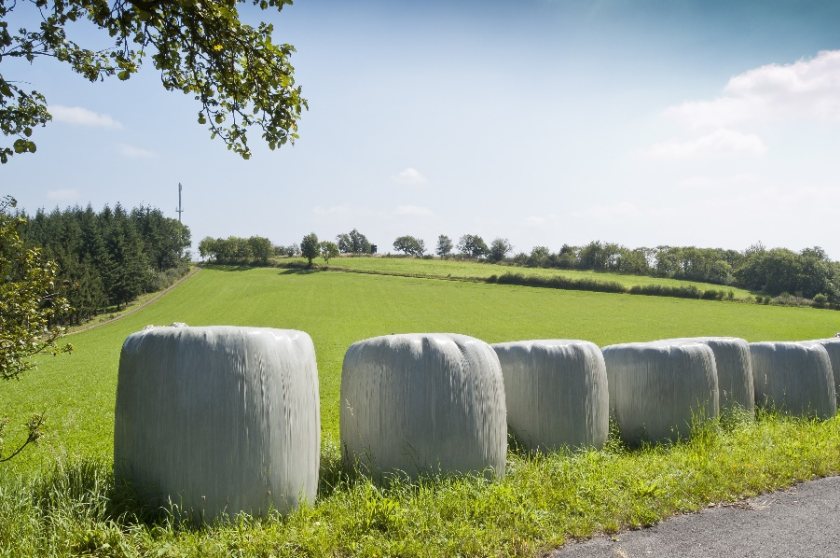
Baled silage could be prone to soil contamination following a very dry start to 2022, due to dust and slurry being incorporated into bales.
Making the warning is agri testing specialist Eurofins Agro UK, which says if slurry is not incorporated into the soil the crop will not see the full benefit.
Any residues risk contaminating bales with harmful bacteria such as enterobacteriaceae, the company adds.
High applications followed by dry weather can also cause the fibre from the applied slurry to lift up into the crop, but this can be detected by accurate ash analysis.
Normal ash levels in the plant should be around 6% to 8%, depending on the crop, the company explains.
Higher numbers indicate additional mineral content which will have occurred due to soil being incorporated into the bale.
Soil can contain clostridia, spores and enterobacteria, which can be become a challenge to overcome.
Daniel Robinson, from Eurofins Agro UK, says: “A test will show contamination by providing data on Volatile Fatty Acids (VFAs).
"Contaminated bales will be high in butyric acid and low in lactic acid, causing dry matter losses.
"A slower fermentation in the bale will been shown in a higher than optimal pH level which will lead to the bale not storing well and losing protein."
Pre-cut dry NIR tests should be carried out to establish sugar levels and nitrate content, Mr Robinson explains.
During the cutting and baling process, soil can be incorporated into the bale which can lead to potentially harmful bacteria being present in the forage.
“A higher pH combined with spoilage and harmful organisms can result in moulds and yeasts growing, resulting in further dry matter loss, and potentially producing mycotoxins which can cause health problems in livestock and impact on productivity.”
Mr Robinson suggests that a dry NIRS test provides true ash content data by burning the sample at 550°c which can help to remove any doubt.
“Some tests only estimate ash content by using NIR, but we provide a separate ash test to be more accurate.
"This will prevent contaminated forage from bales being fed out to milkers and means it can be either discarded or fed to other animals.”
The dry NIRS process also provides data for dry matter content, pH levels, ME and 23 other parameters.
“By removing the moisture in the sample, we are essentially removing the ‘fog’ that other tests cannot see through," he explains.
"Drying the sample leaves only the solid content which, once ground to a consistent 1mm thickness, is exposed to the infrared light to provide greater detail than any other test on the market."
